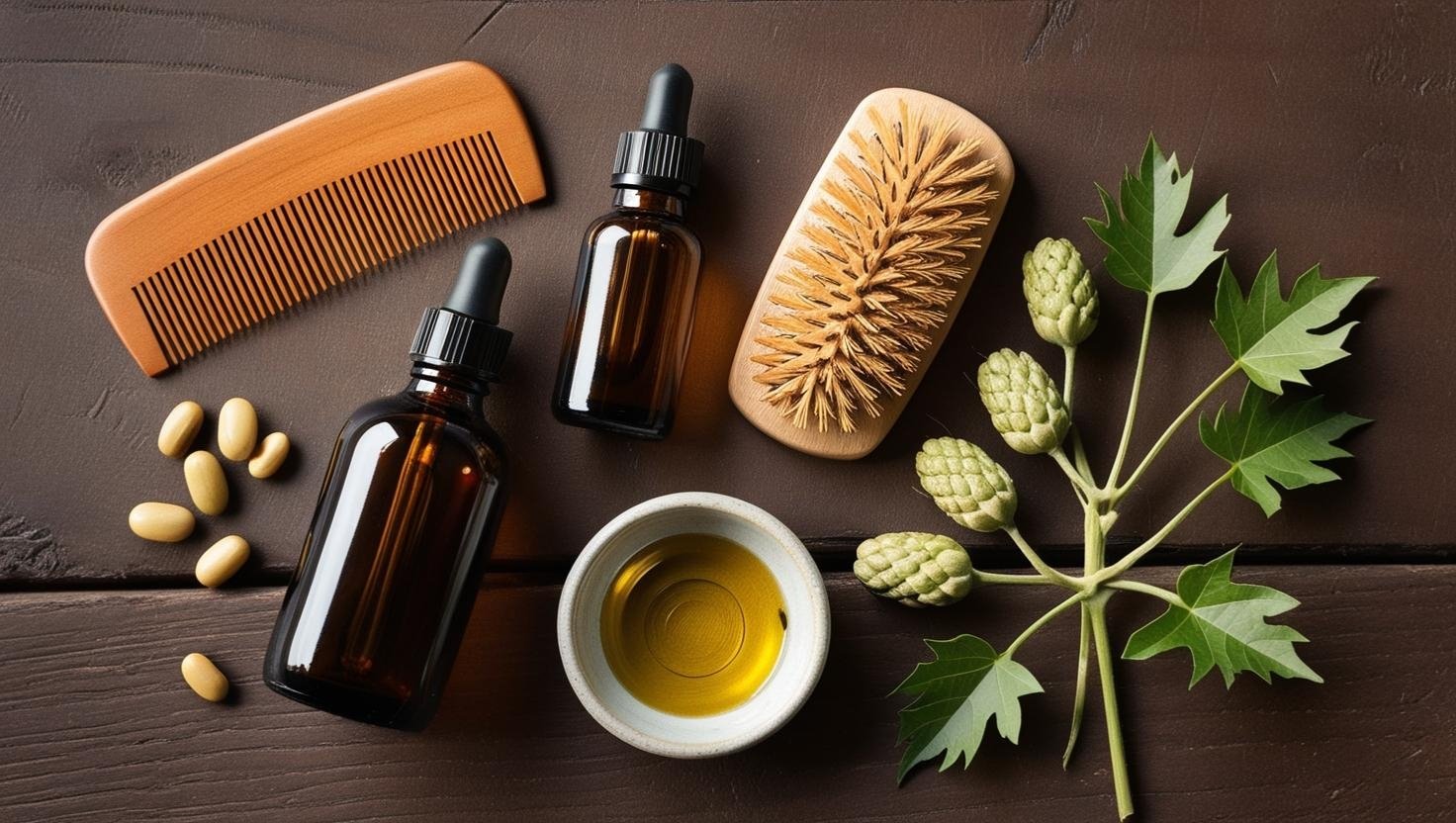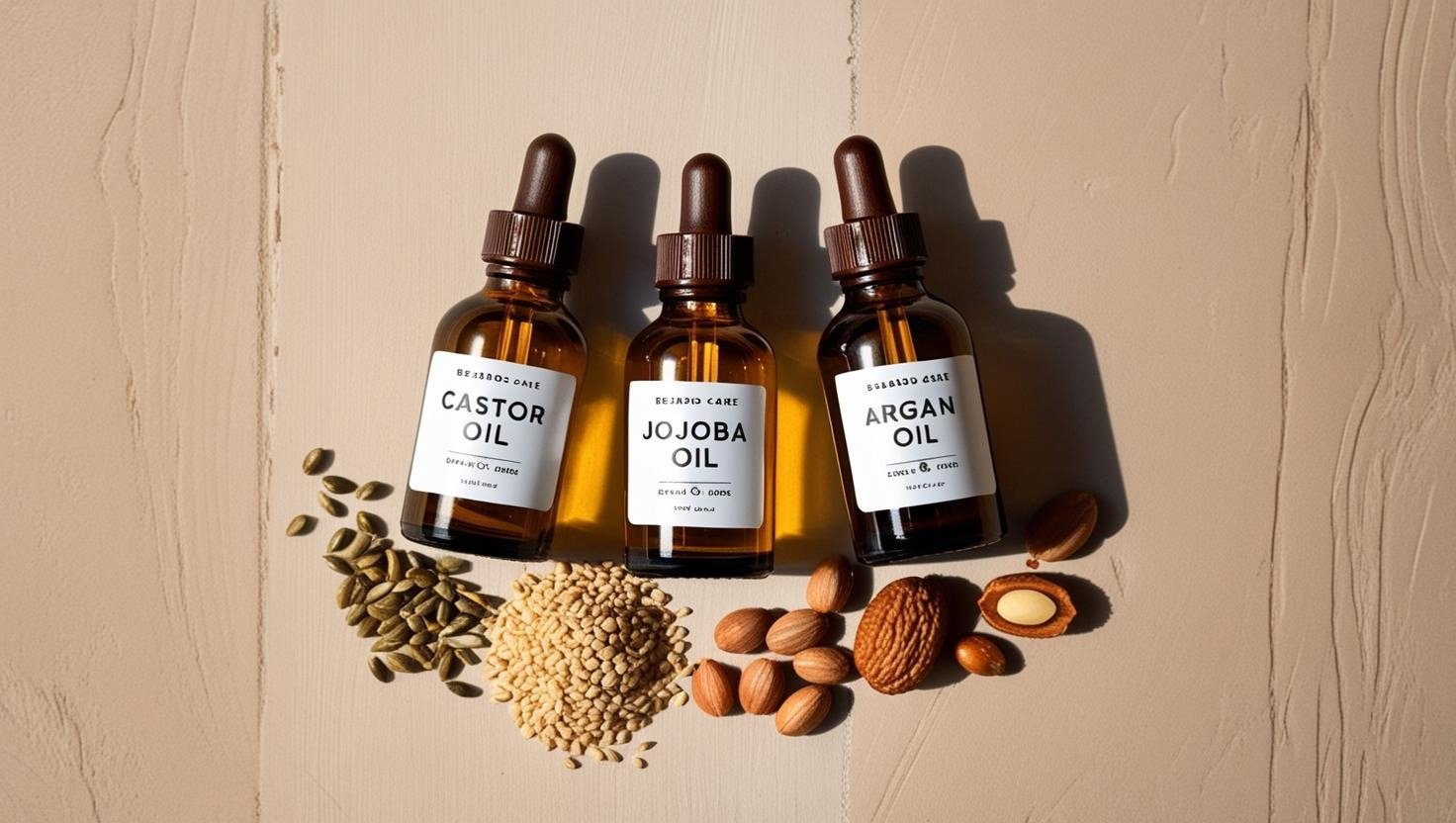Have you ever wondered how you could enhance and maintain your beard’s growth and health with something natural and effective? In recent years, castor oil has emerged as a popular solution for those looking to boost their facial hair game. Let’s explore why castor oil might be a tool you want to incorporate into your beard care routine.
What is Castor Oil?
Castor oil is a unique vegetable oil obtained from the seeds of the castor plant, scientifically known as Ricinus communis. Its distinguishing feature is the high concentration of ricinoleic acid, a monounsaturated fatty acid. Often used beyond the realm of beauty, castor oil’s lubricative properties make it a common component in motor oils, hydraulic fluids, and even perfumes and soaps. Though its versatility is impressive, it’s castor oil’s benefits for hair care that have taken the spotlight, particularly in recent years.
Fatty Acid Composition
Understanding the composition of castor oil is crucial to appreciating its effects on hair. With approximately 90% of its fatty acids being ricinoleates, castor oil is potent in its application. Ricinoleic acid is known for its anti-inflammatory and antimicrobial properties, which may contribute to hair and skin health. For beard enthusiasts, these attributes can translate to enhanced beard growth and a healthier skin environment.

Historical Uses of Castor Oil
While women have long praised it for strengthening and thickening hair, eyelashes, and eyebrows, castor oil’s benefits are being increasingly recognized among men. Used for centuries in various forms, it was once a favored remedy for a range of ailments. Its transition to a beauty staple has been gradual, but today, the focus is prominently on its potential to support and enhance facial hair.
Castor Oil and Beard Growth
Now that we’ve set the foundation, let’s delve into how castor oil can benefit your beard. By understanding both scientific and anecdotal evidence, we can begin to piece together the role castor oil plays in facial hair care.
How Does Castor Oil Stimulate Beard Growth?
The primary growth-promoting mechanism of castor oil lies in its ability to boost the level of prostaglandin E2. Prostaglandin E2 is a compound studied for its role in stimulating hair growth, by inducing an inflammatory response at the hair follicle. This mild inflammation can potentially encourage new hair growth and strengthen the existing beard.
Table 1: Potential Effects of Prostaglandin E2 on Beard Growth
| Effect | Description |
|---|---|
| Follicle Stimulation | Encourages follicle activity which may increase hair growth |
| Strengthening Existing Hair | May thicken and strengthen the existing facial hair strands |
The Illusion of Thickness
One reason castor oil is celebrated as a beard care product is that it provides a temporary visual enhancement. Its dense, viscous nature allows it to stick to facial hair, creating a fuller appearance. While this is a short-term effect, it offers a boost in confidence and aesthetics, akin to using a styling product.
Evidence and Anecdotal Claims
There are anecdotal claims and some evidence suggesting castor oil’s effectiveness in stimulating new beard growth. Though scientific studies are still limited, the existing research alongside personal testimonials paints a promising picture. And even if growth isn’t substantially enhanced, many find castor oil to be an effective, pleasant-smelling beard moisturizer with a notable impact on appearance and texture.
How to Use Castor Oil for Beard Growth and Maintenance
When incorporating castor oil into our beard care routine, there are a few techniques to consider to maximize its benefits. Let’s walk through the recommended steps.
Preparation and Application
- Cleansing: Start with a clean beard. We should ensure our face and beard are free of dirt and oil to maximize absorption.
- Application: Take a small amount of castor oil into your palms. A little goes a long way, so begin with a few drops and add more if necessary.
- Warm the Oil: Rub your palms together to warm the oil. Warming it slightly allows for better spreadability and absorption into the hair and skin.
- Massaging: Using your fingers, gently massage the oil from root to tip and ensure each strand is coated. Incorporate a brief massage into the skin beneath the beard to stimulate circulation which may further aid in growth.
- Frequency: For optimal results, we might use castor oil 2-3 times a week. This allows our beard to reap the benefits without causing any buildup or greasiness.
Additional Tips for Best Results
- Combiner’s Choice: We can combine castor oil with lighter oils, such as jojoba or argan oil, to improve texture and ease of application.
- Timing: Consider applying castor oil before bed and leaving it overnight to allow for full absorption.
- Rinse-Off Alternatives: If you find the oil too thick, consider using it as a pre-shampoo treatment, applying it an hour before showering.
Castor Oil in Our Beard Care Routine
Integrating castor oil into our beard care routine can be a seamless process with consistent habits. Here’s how to incorporate it effectively:
Developing a Routine
- Morning Routine: Use a lighter oil blend in the morning for a non-greasy feel throughout the day. Opt for castor oil as part of a nighttime regimen for deeper treatment.
- Weekly Treatments: Deep condition with castor oil once a week to reinforce your facial hair health commitment.
- Mindful Adjustments: Observe how your beard responds and adjust frequency based on personal results and preferences.
Benefits of Consistent Use
Consistency is key in any care routine. With regular use, castor oil might help enhance the health of our beard in several ways:
- Nourishment: Provides essential nutrients that can promote softer, more manageable hair.
- Strengthening: Helps decrease breakage and split ends, leading to a fuller-looking beard.
- Skin Health: Offers moisturizing benefits that support the skin beneath the beard, reducing itchiness and dryness.
Debunking Myths and Addressing Concerns

While castor oil holds promise, it’s important to address any misconceptions or concerns about its use for beard care.
Common Myths
- Instant Results: Contrary to some beliefs, castor oil won’t result in overnight beard growth. Patience and persistence are needed to see noticeable effects.
- Universality: Not everyone will respond to castor oil the same way due to differences in skin type and hair texture.
Addressing Concerns
Some might hesitate due to potential side effects or uncertainties about effectiveness. Here are a few reassurances:
- Side Effects: Castor oil is generally safe for most people, but it’s wise to conduct a patch test before full application to prevent allergic reactions.
- Effectiveness: While it may not work wonders for everyone, its nourishing properties make it a worthwhile addition to a beard care routine.
Alternatives and Enhancements
For some, castor oil might be the perfect solution, but we should also acknowledge other natural alternatives and enhancements that might complement our beard care.
Alternative Oils
- Jojoba Oil: Known for its likeness to natural skin oils, jojoba can be a lightweight alternative.
- Argan Oil: Rich in vitamin E and essential fatty acids, ideal for moisturizing.
- Coconut Oil: Offers antibacterial qualities and is excellent for dry hair types.
Enhancing with Supplements
In addition to topical treatments, considering supplements that support hair health might amplify results:
- Biotin: A favorite among hair growth enthusiasts, promoting both growth speed and strength.
- Omega Fatty Acids: Boosts overall hair health from within.
Conclusion
Castor oil presents a promising opportunity for those of us looking to enhance beard growth and maintain health naturally. With its nourishing properties and potential for promoting follicle stimulation, it has become a favorite in the beard community. By integrating castor oil into a consistent beard care routine, adapting based on personal response, and considering complementary alternatives, we can achieve a fuller, healthier beard that reflects our dedication to personal grooming. We hope this detailed exploration provides the knowledge and encouragement needed to make informed choices about incorporating castor oil into our beard care endeavors. Here’s to healthier, more vibrant beards for all!

